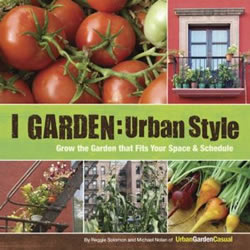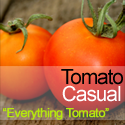Posted on 20 May 2010 by urbangardencasual.com
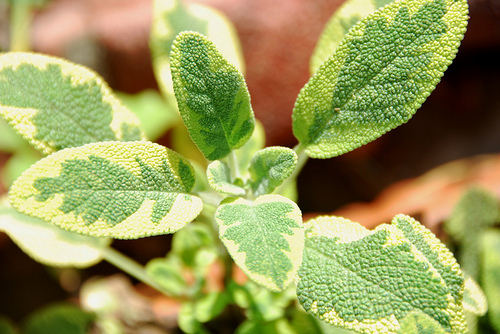 By Sonya Welter
By Sonya Welter
Edible perennials are essential to a permaculture plot, and anyone who wants more food with less work will want to incorporate some perennial herbs into their garden.
Of course, whether or not a plant is a perennial in your garden depends on your USDA hardiness zone.
If you want to try to grow something that’s just above your zone–lavender in zone 4, for example–you can try planting it along the south side of your house, where winter temperatures will stay a little warmer.
Here are some perennial herbs to consider for your garden:
Chives (Allium schoeoprasum)
When I was a kid I liked to chew on the long, thin leaves of chives from the yard. Chives are hardy in zones 3 through 9, and the leaves and purple flowers have a mild oniony flavor. Chives are good to grow under fruit trees, since they’ll repel borers and prevent apple scab. Chives (and other plants in the allium family like onions and garlic) will also deter deer and rabbits.
Lemon Balm (Melissa officinalis)
The citrus scented leaves of lemon balm make a Read the rest of this entry »
Posted on 20 May 2010 by urbangardencasual.com
 By Sonya Welter
By Sonya Welter
Urban gardeners have some advantages over their rural counterparts, and one of them is that there are fewer mammalian pests in the city.
Urban gardeners will have to deal with fewer deer, who will trample their seedlings and mow their lilies and hostas down to the ground.
Urban gardeners are also less likely to encounter bears, who will tear down bird feeders and strip berry bushes and fruit trees.
But rabbits are an almost universal pest in all but the most urban of gardens. Sure, they’re cute when they’re merrily gamboling in the front yard, nibbling on dandelions and clover, but they’re less cute when it’s your lettuce or Read the rest of this entry »
Posted on 18 May 2010 by urbangardencasual.com
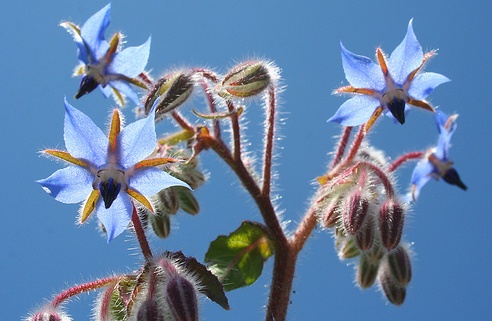 By Sonya Welter
By Sonya Welter
“Feed and the pests will come,” seems to be every gardener’s motto.
We may never see a pest but as soon as we plant the first tomato or pepper the swarms seem to appear.
But a unique concept of feeding and nurturing nature’s insect task force will bring even the novice gardener relief.
The concept is simple provide shelter, water, and food for beneficial insects and let nature take its course. So try a beneficial insect border around your garden and see how nature works without chemicals. Who knows you may decide to do a whole beneficial insect garden to reward nature’s insect task force.
SWEET ALYSSUM (Lobularia maritima)
This annual is low growing and produces white flowers that can form a border in a flowerbed or can act as a fast-growing ground cover that vegetables can be planted into. Many studies have shown that sweet alyssum is highly appealing to aphid eating hover flies.
CUP PLANT (Silbium perfoliatum)
This perennial grows Read the rest of this entry »
Posted on 16 May 2010 by urbangardencasual.com
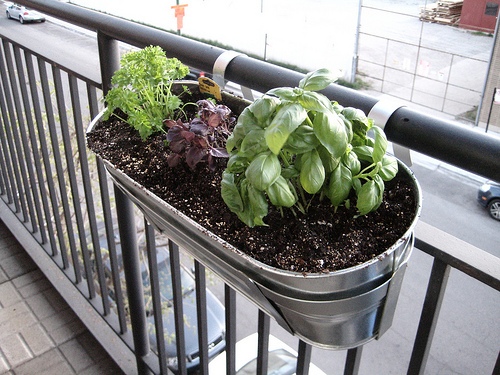 By Mindy McIntosh-Shetter
By Mindy McIntosh-Shetter
A few years ago my husband worked for a man that was from Sicily who managed a pizza parlor.
Through this business he made American versions of calzones, ravioli, and pizza.
His dishes were always in demand but his craft never really showed through until we were invited to his home.
Sal was from a small village in Sicily where his grandfather taught him how to cook using local ingredients. Fresh mozzarella from the surrounding farms, basil, and tomatoes were the staples for Sal and his family. Sal’s grandfather taught him the art of Read the rest of this entry »
Posted on 14 May 2010 by urbangardencasual.com
 By Mindy McIntosh-Shetter
By Mindy McIntosh-Shetter
Mint is a very invasive plant that needs some form of restraint.
What makes it invasive is what also makes it easy to grow.
Mint can be started by seeds, cuttings, simply bending a branch to the ground and rooting, or by roots.
That is why restraining this herb is so important. Restraining can take the form of growing in a container or using landscape edging to surround the plant. But regardless of what type of control you choose one must always contain this herb.
Mint is a very good herb to start out with as a beginner gardener. It grows in all soil types, weather, and moisture level while it does prefer it on the dry side but will grow in moist conditions.
Keep in mind if you Read the rest of this entry »
 By Sonya Welter
By Sonya Welter By Sonya Welter
By Sonya Welter By Sonya Welter
By Sonya Welter By Mindy McIntosh-Shetter
By Mindy McIntosh-Shetter By Mindy McIntosh-Shetter
By Mindy McIntosh-Shetter